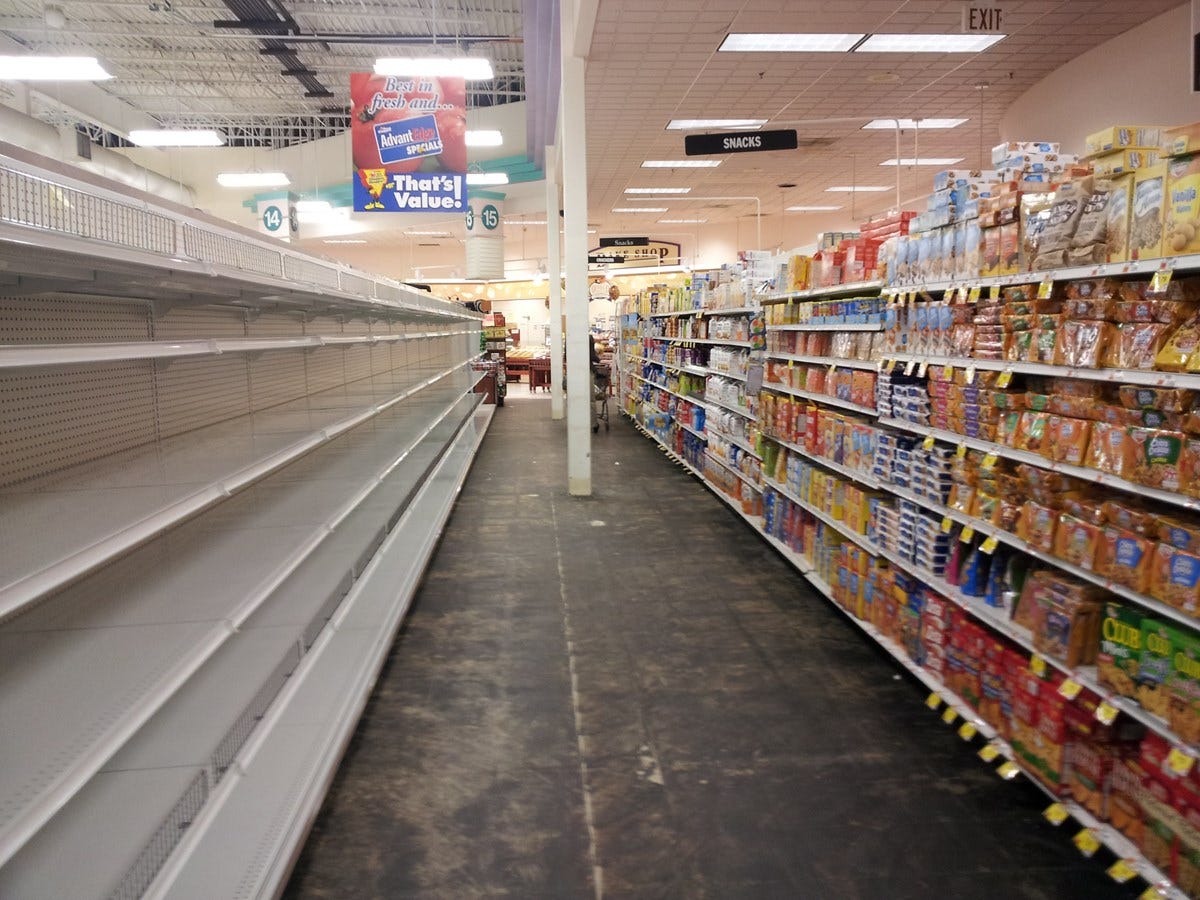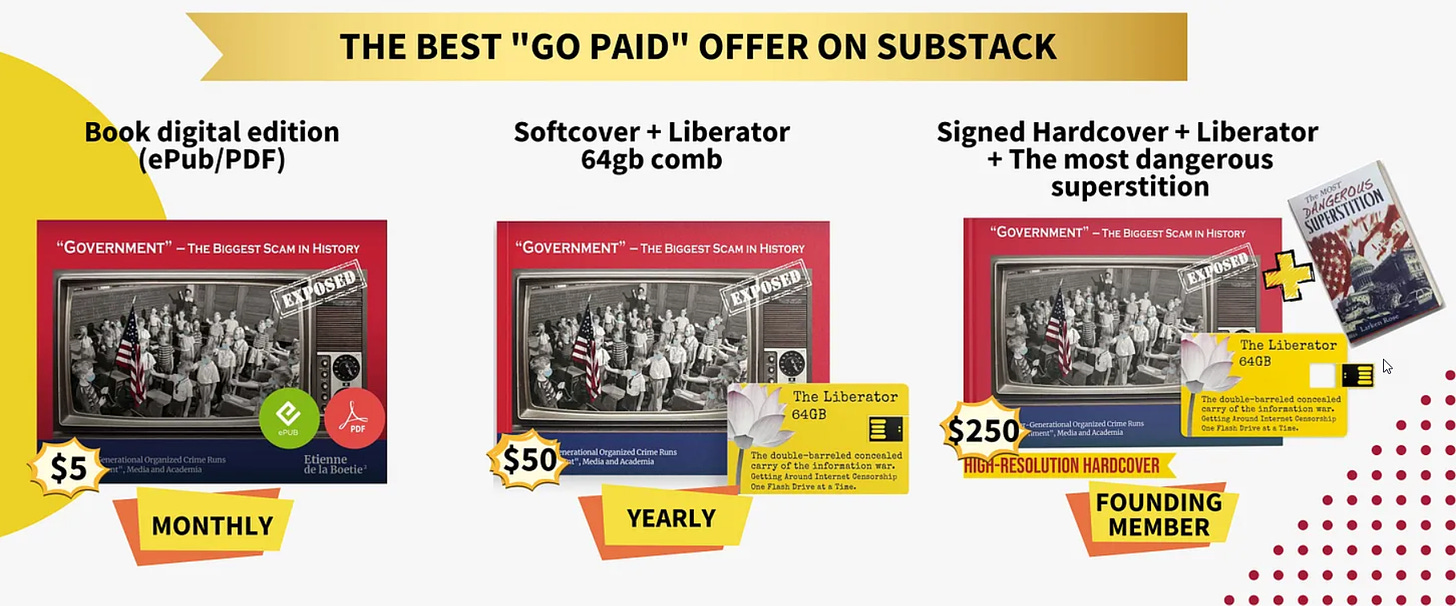The Problem with a Chicago Municipal Grocery Store
When it comes to centrally planned grocery stores, run-of-the-mill government incompetence is the least of our worries.
hicago's new mayor, Brandon Johnson, is experimenting with a surprising new city policy— government-run grocery stores.
The policy idea was announced by Johnson earlier this week. "I am proud to work alongside partners to take this step in envisioning what a municipally owned grocery store in Chicago could look like," he said.
The proposal comes in response to an apparent lack of access to grocery stores after giants Walmart and Whole Foods closed down their stores in large areas of the city.
The companies each claim the closures were due to the stores being unprofitable. The lack of nearby grocery stores has caused significant speculation on how these locations could possibly be unprofitable.
Many speculate the issues stem from rising thefts in Chicago. DailyMail reports, "to date in 2023 over 2022, thefts are up 25 percent according to the Chicago Police Department while robberies are up 11%."
In any case, municipal authorities in Chicago have decided these closures are severe enough issues to warrant the development of centrally planned grocery stores. How would these stores do? Economic analysis can help us understand what central planning of groceries would look like.
Centrally Ignored Costs
How would a city-run grocery store compare to the private alternative? The main difference between private and government-run services comes down to one word—profit.
Privately run grocery stores have an incentive to make the most profit possible. Profit is simply the difference between the total number of dollars a store receives and the total amount of dollars the store spends (implicitly and explicitly) on inputs such as inventory and labor.
Maximizing profit means trying to maximize the difference between revenue and expenses. For any given amount of sales, stores want the lowest cost possible. Private business wants to buy the minimal amount of labor, inventory, and capital (e.g. shopping carts, shelves, and cash registers) possible while still maintaining high revenues.
This drive to minimize costs is a good thing for society. Every worker and machine used in a grocery store is a worker and machine that cannot be used anywhere else in the economy. Inputs in the production process are scarce, so the less inputs the stores use, the better.
Imagine a grocery store started hiring heart surgeons to work at cash registers. Doctors are smart enough that they'd certainly be good at the job, but this would be incredibly wasteful for society!
Luckily, it would never happen because in order to hire a heart surgeon the store would have to offer higher salaries than hospitals. A grocery store that did this would make a massive loss. This illustrates an important point. The costs a for-profit business faces reflect the cost of that business using society's scarce resources.
While it may be obvious in extreme cases like this what inputs you should (or should not) use, not all choices have obvious answers. Should grocery stores buy a computer system that better manages pickup or physical metal shelving to have more in-person shopping? Which one is least wasteful for society? Profit and loss can give the answer. If the computer system does not generate enough revenue to make up for the lost opportunities elsewhere in the economy, the business will run a loss—just like hiring heart surgeons for cashiers.
For-profit businesses are necessarily conservationists of society's resources because every resource used unnecessarily is money out of the pocket of business-owners.
No such logic operates in government-run production, however. There are no profits or losses in municipal operations. This means two things. First, there is no accounting for the value of the assets a business owns and uses in production. How much value are government cash registers producing on net? Without profit, there is no method for being able to tell.
Without the knowledge of profit and loss, there is no incentive for municipal operations to keep costs down. Remember, in for-profit stores every dollar of inputs wasted means a dollar out of the pockets of owners. What about if a dollar of input is wasted in a city-owned store?
Well, the dollar doesn't come out of the politician's pocket. It's not as if the mayor of Chicago takes home the net revenue from Chiagomart. Ultimately, the cost of the grocery store will be borne by taxpayers.
So the problem of the municipal grocery store is twofold. First, a government-owned grocery store will buy and use scarce inputs, but it cannot use knowledge about profits and losses to know if the value created from the input is greater than the cost of using the input. Society's scarce resources will be wasted. Second, there is no incentive for government-run grocery stores to cut costs because the costs are paid by the taxpayer.
Go paid at the $5 a month level, and we will send you both the PDF and e-Pub versions of "Government" - The Biggest Scam in History... Exposed! and a coupon code for 10% off anything in the Government-Scam.com/Store.
Go paid at the $50 a year level, and we will send you a free paperback edition of Etienne's book "Government" - The Biggest Scam in History... Exposed! AND a 64GB Liberator flash drive if you live in the US. If you are international, we will give you a $10 credit towards shipping if you agree to pay the remainder.
Support us at the $250 Founding Member Level and get a signed high-resolution hardcover of "Government" + Liberator flash drive + Larken Rose's The Most Dangerous Superstition + Art of Liberty Foundation Stickers delivered anywhere in the world. Our only option for signed copies besides catching Etienne @ an event.






